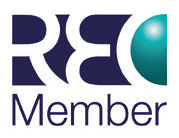Has the recent and current sporting highlight of late in the shape of the Women’s World Cup taking place in Canada, been given the visibility and profile it should deserve?. Women’s football in the past has been dismissed, except in a few notable nations such as Italy and the USA perhaps, not given the importance it deserves and maybe not even watched by many football fans. Times are changing; Women’s football is as exciting and watched like any other major sporting event. Comparing the likes of Messi and Ronaldo to Marta (from Brazil) or Alex Morgan (USA) there are many exciting players representing their country and worth watching.
In an interesting parallel to careers in corporate life, but not as pronounced I accept, it is noteworthy the women who represent our country, investing in their careers find themselves comparatively less well rewarded than their male counterparts.. Why? In modern Britain, despite the1970 Equal Pay Act, women still earn less than men. The gender pay gap remains the clearest and most dramatic example of economic inequality for women today. The overall pay gap stands at 19.1 per cent (2014) measured by median gross hourly pay (1). Whilst the gap has fallen significantly from 27.5% in 1997, this figure is still above the EU 2014 average of 16.4%, a range which includes Slovenia at 3.2% and Estonia at 29.9% (2). The pay gaps vary between men and women in different groups, such as age, education, and employment and some women earn similar incomes to their male equivalents, but many more earn less. Lower earnings over a lifetime usually lead to lower savings, smaller pensions and less economic independence than men.
Looking around the world and seeing the success many women have had it is hard to believe that there is still such a difference in pay. More CEOs, more industries, more power, more challenges. That’s the story of Fortune’s 2014 ranking of the 50 Most Powerful Women in Business, which features an all-time record of 24 large-company CEOs in its pages. Our women are leading—and in many cases pushing through difficult transformations—in heavy industries such as tech, energy, defense, and autos. Ginni Rometty, No. 1 for the third time running, continues to retool IBM. No. 2, Mary Barra, must fix General Motors from the inside out. And Marillyn Hewson, the CEO of Lockheed Martin and our fourth-ranked woman, is looking beyond defense for growth. Today eight of our top 10 MPW lead large industrial, tech, and consumer products companies.
It’s a long way from our original 1998 list, on which, we noted at the time, most members “came from industries with a premium on creativity,” such as advertising, media, and publishing, with “no top women at blue-chip firms.” Creativity is still a requirement for success, of course, but you no longer have to work in a “creative” industry to advance as a woman. Another common denominator is change: Seven of our top 50 were named to their jobs in the past year, and nine are newcomers to the list. That suggests more turnover at the upper echelons of business—which, it’s fair to say, is a very good thing for a whole lot of powerful women.
Our service and promise to our candidates is that we will actively work on their behalf and talk to companies that are of interest to them and companies that we have discussed with you prior. If you would welcome the opportunity to discuss your career to date with us please call ABPM. We would be delighted to assist.
Rej Abraham Managing Director
 ABPM Recruitment Ltd.
ABPM Recruitment Ltd.